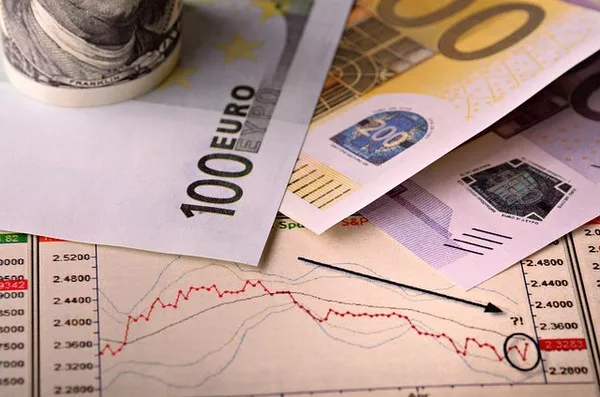In the intricate world of international finance, the strength of a currency is a reflection of various economic, political, and market forces. The euro (EUR) and the US dollar (USD) are two of the most prominent currencies in the global market, frequently analyzed and compared due to their significant roles in international trade, finance, and economics. As of recent years, there have been periods where the euro has shown relative strength against the dollar, raising questions among economists, investors, and policymakers about the underlying reasons. This article delves into the multifaceted factors contributing to the euro’s strength compared to the US dollar.
Economic Fundamentals
One of the primary determinants of a currency’s strength is the economic fundamentals of the region it represents. The Eurozone, comprising 19 of the 27 European Union (EU) member states, has shown robust economic performance in various sectors.
GDP Growth: The GDP growth rate of the Eurozone has been relatively stable. While individual countries within the Eurozone may experience fluctuations, the overall economic performance has often been strong, contributing to a favorable outlook for the euro.
Trade Balance: The Eurozone frequently enjoys a trade surplus, meaning it exports more than it imports. This surplus leads to a higher demand for euros, as international buyers convert their currencies to euros to purchase European goods and services.
Inflation Rates: The European Central Bank (ECB) has maintained a steady inflation rate close to its target of just below 2%. This stability in inflation helps maintain the euro’s purchasing power and attracts investors looking for a stable currency.
Monetary Policy
Monetary policy significantly influences currency strength. The European Central Bank (ECB) and the Federal Reserve (Fed) of the United States adopt different approaches to managing their respective economies.
Interest Rates: Higher interest rates in the Eurozone compared to the US can attract foreign capital looking for better returns on investments, thereby increasing the demand for euros. Although interest rates have fluctuated, the ECB’s policies have often resulted in a favorable interest rate differential for the euro.
Quantitative Easing (QE): Both the ECB and the Fed have engaged in quantitative easing, but the timing, scale, and impact of these programs differ. The ECB’s measures, aimed at stimulating the economy, have often been seen as more conservative compared to the Fed’s aggressive QE policies, which sometimes lead to a depreciation of the dollar.
Political Stability and Governance
Political stability and effective governance are crucial for maintaining investor confidence in a currency.
European Union Stability: Despite challenges such as Brexit and varying political climates across member states, the EU has largely remained stable. The collective governance and policies designed to maintain economic cohesion across the Eurozone contribute to the euro’s strength.
US Political Climate: The US has faced significant political turbulence in recent years, including contentious elections, policy uncertainty, and government shutdowns. These factors can create uncertainty, leading investors to seek refuge in other currencies, including the euro.
Global Reserve Currency Dynamics
The euro and the dollar are both prominent reserve currencies, held by central banks around the world to diversify their foreign exchange reserves.
Diversification: In recent years, there has been a trend among central banks to diversify their reserves away from the dollar and into other currencies, including the euro. This diversification reduces reliance on the dollar and increases demand for the euro.
Trust and Stability: The euro is perceived as a stable currency due to the collective economic strength and governance of the Eurozone. This perception bolsters its status as a reserve currency, contributing to its strength relative to the dollar.
Market Sentiment and Speculation
Currency markets are highly influenced by investor sentiment and speculative activities.
Risk Aversion: During periods of global uncertainty or economic downturns, investors often seek safer assets. While the US dollar is traditionally considered a safe-haven currency, the euro has increasingly played this role, especially given the stability of the Eurozone.
Speculative Trading: Currency traders and investors speculate on future currency movements based on economic indicators, geopolitical events, and market trends. Positive sentiment towards the Eurozone’s economic prospects can drive speculative demand for the euro.
Comparative Economic Indicators
Examining specific economic indicators can provide further insight into why the euro might be stronger than the dollar at any given time.
Employment Rates: Employment rates and labor market conditions are critical economic indicators. The Eurozone has seen improvements in employment rates, which bolster economic confidence and the strength of the euro.
Productivity and Innovation: Europe is home to many high-performing industries and innovative companies. The strength of sectors such as automotive, pharmaceuticals, and technology can enhance economic performance and, consequently, the euro’s strength.
External Economic Relations
The relationship of the Eurozone and the US with other economies also impacts currency strength.
Trade Relations: The Eurozone has strong trade relationships with major economies such as China and the US. Positive trade dynamics and agreements can boost confidence in the euro.
Foreign Investment: Higher levels of foreign direct investment (FDI) in the Eurozone can increase demand for euros, reflecting confidence in the region’s economic prospects.
Conclusion
The strength of the euro relative to the dollar is influenced by a complex interplay of factors. Economic fundamentals, monetary policy, political stability, global reserve currency dynamics, market sentiment, comparative economic indicators, and external economic relations all play significant roles. Understanding these factors provides valuable insights into the forces driving currency markets and helps stakeholders make informed decisions in the global financial landscape.
In the dynamic and often unpredictable world of currency exchange, the relative strength of the euro against the dollar is a testament to the economic resilience, strategic policy decisions, and overall stability of the Eurozone. As global economic conditions continue to evolve, monitoring these key factors will be essential for anticipating future trends in the EUR/USD exchange rate.


